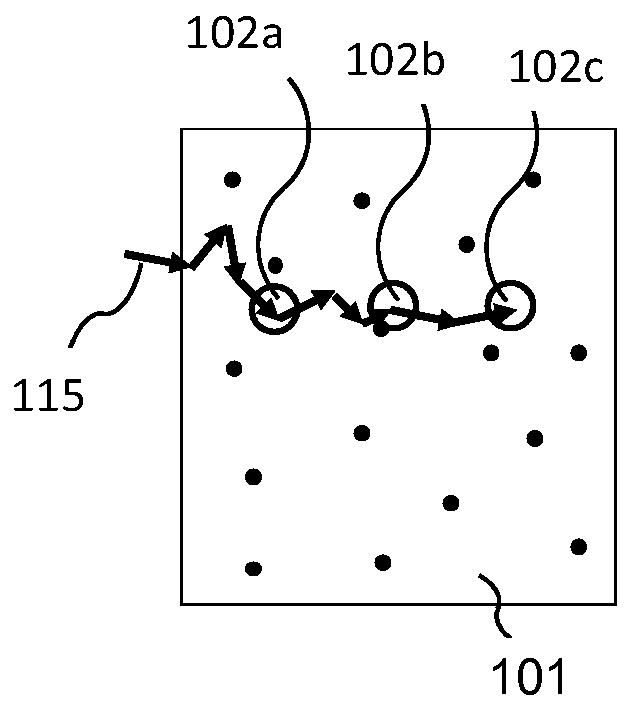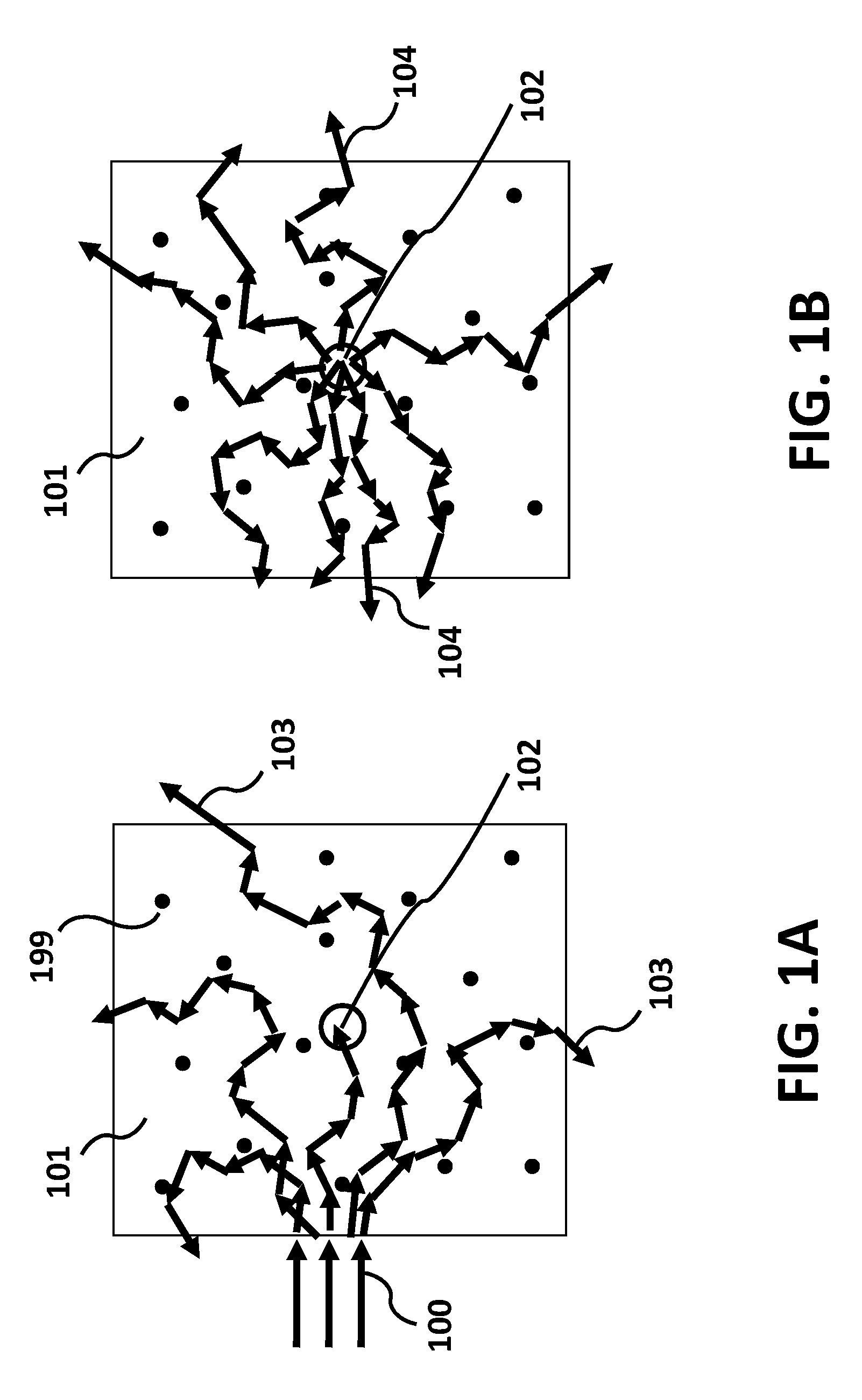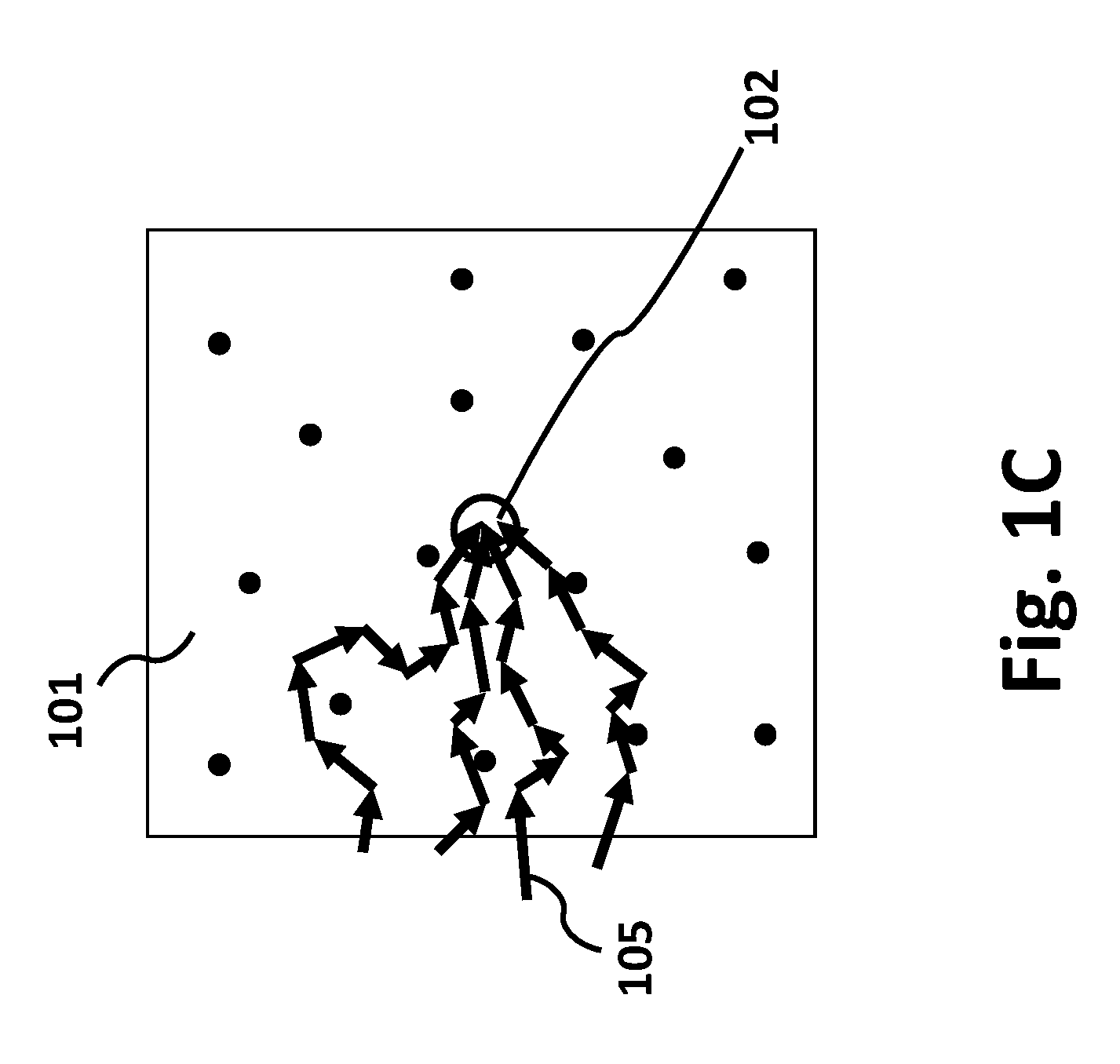Apparatus and method for irradiating a medium
a technology of irradiation and apparatus, applied in the field of apparatus and a method for irradiation of a medium, can solve the problems of loss of directionality of light as well as information associated, difficult to extract detailed internal information about a medium, and difficult to obtain internal information through detection of scattered ligh
- Summary
- Abstract
- Description
- Claims
- Application Information
AI Technical Summary
Benefits of technology
Problems solved by technology
Method used
Image
Examples
fourth embodiment
[0045]Once the wavefront corresponding mainly to this frequency-shifted light 104 is recorded and is played back with its phase conjugation 105, this phase conjugation can retrace its trajectory and reach or travel toward the position 102 shown in FIG. 1C. To realize a phase conjugation (i.e., a reconstructed wave, a phase conjugation wave), holography can be employed. In holography, an interference pattern generated by interference between the modulated light and a reference wave can be recorded in a holographic material, and also the interference pattern can be detected by a photodetector, such as a CCD sensor and a CMOS sensor. A technique to detect the interference pattern by the photodetector is referred to as digital holography. The phase conjugate wave can be generated based on the obtained information corresponding to the interference pattern. For example, when the interference pattern is recorded in the holographic material, the conjugate wave can be generated by a pump lig...
third embodiment
[0060]The light emitted by the light source 200 eventually illuminates the holographic material 206 as a pump light beam 213 in a direction substantially opposite to that of the reference light beam 212, as shown in FIG. 2B. Alternatively, another light source for the pump light can also be employed instead of the light source 200, as described in a The first irradiating unit, after the information is recorded on the holographic material, may thus be configured to irradiate the holographic material without passing through the medium 209. The pump light beam 213 may be a continuous wave or a pulse wave.
[0061]This pump light generates a phase conjugation wave 210′ of the recorded wavefront inside the holographic material 206. The phase conjugation wave 210′ propagates toward the scattering medium 209 and enters the medium 209. This phase conjugation wave 210′ can retrace its original trajectory experienced at the recording step in the scattering medium 209, and go back to the ultraso...
first embodiment
[0069]An irradiating apparatus and method according to the present invention will be described below. FIGS. 3A and 3B are diagrams illustrating an exemplary configuration of a recording step (FIG. 3A) and a reproducing step (FIG. 3B), respectively.
[0070]The first embodiment includes an acousto-optic imaging technique. A laser 300 emits an initial light and the initial light is split into an incident light beam 314 and a reference light beam 315 by a beam splitter 301 in FIG. 3A. The incident light beam 314 and the reference light beam 315 enter AOM 302 and AOM 305, respectively. The frequencies of those two AOMs are typically 50 MHz to 80 MHz, and are slightly different by an amount equal to the frequency applied to an ultrasound system 311, which ranges from approximately 1 to tens of megahertz. The role of these AOMs may be the same as described above.
[0071]A lens system 303 controls the beam size of the incident light 314, and a movable mirror 304 controls the incident point on t...
PUM
| Property | Measurement | Unit |
|---|---|---|
| wavelength | aaaaa | aaaaa |
| wavelength | aaaaa | aaaaa |
| frequency f2 | aaaaa | aaaaa |
Abstract
Description
Claims
Application Information
 Login to View More
Login to View More - R&D
- Intellectual Property
- Life Sciences
- Materials
- Tech Scout
- Unparalleled Data Quality
- Higher Quality Content
- 60% Fewer Hallucinations
Browse by: Latest US Patents, China's latest patents, Technical Efficacy Thesaurus, Application Domain, Technology Topic, Popular Technical Reports.
© 2025 PatSnap. All rights reserved.Legal|Privacy policy|Modern Slavery Act Transparency Statement|Sitemap|About US| Contact US: help@patsnap.com



